Joyful moments at Unity Health Toronto: Building resilience, marathon victories, and unexpected connections
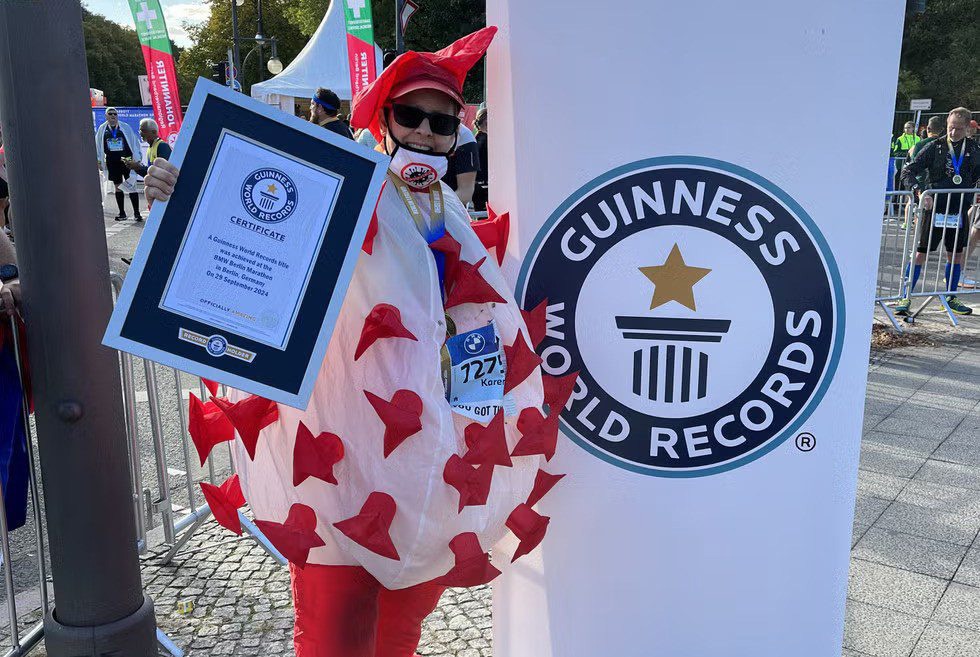
Photo: Guinness World Records
Throughout the hallways of Unity Health Toronto, connections are often forged in unexpected ways. In a place where healing comes in many forms, our staff and patients are finding strength in the connections they build, the records they break, and the love they share.
Each success – whether personal or in collaboration – underscores the profound role that connections play in one’s path to healing. This holiday season, these stories of perseverance, achievement and connection serve as a reminder that even in the most challenging of circumstances, human connection and determination are elemental in our lives.
Record-breaking triumphs
While most runners focus solely on the finish line, two Unity Health staff members are proving that strength and resilience are important traits to maintain inside and outside of the hospital.
Sign up for the Unity Health Toronto newsletter, a monthly update on the latest news, stories, patient voices and research emailed directly to subscribers. If you haven’t subscribed yet, you can do that by clicking here.
Both at St. Michael’s, Karen Michelsen, a medical surgical nurse in the intensive care unit, and Derek Beaton, the Director of Advanced Analytics, are now recognized as Guinness World Record holders after running separate marathons in costume.
On Sept. 29, Michelsen competed in the 50th BMW-Berlin Marathon in a costume replicating a coronavirus – a large inflatable with red pointed spikes. She completed the race with a time of 5:10:21, beating the previous record holder for Fastest Marathon in a Full-Body Inflatable Costume by 10 seconds.
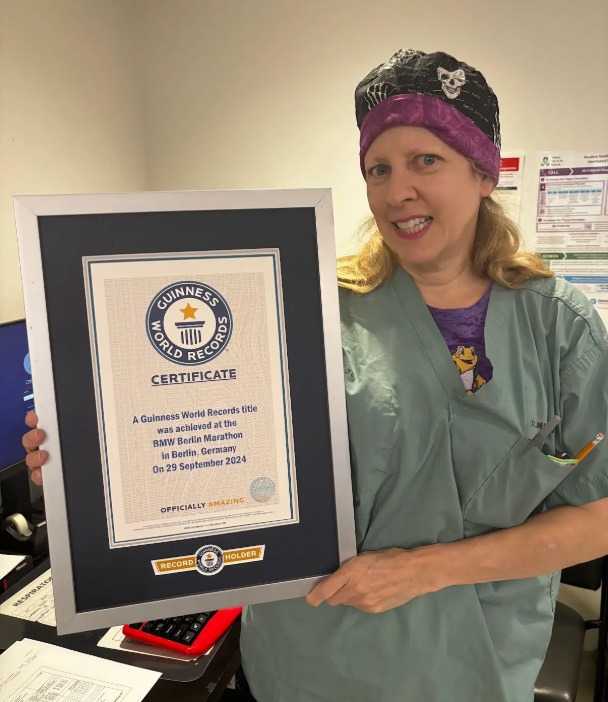
Her decision to run in costume was largely a result of the COVID-19 pandemic, citing the inability to travel, run marathons, and wear costumes to work as her three motivators. The inspiration behind the costume was her personal push to create positive memories of the pandemic for those around her – especially after her own experience in the Command Centre at St. Michael’s.
“This is kind of a crazy memory of COVID, but more from a positive perspective,” says Michelsen. “You can take something negative and turn it into a positive experience.”
In the journey leading up to the marathon, Michelsen faced an uphill battle with her own strength. She attended a two-month long rehabilitation program to strengthen her legs and taught herself how to run again as her legs would easily buckle.
It also took a tremendous amount of training to learn how to run in an inflatable. She recalls the air pumps falling apart the first time she ran in costume, needing to tape battery packs to her vest, and wearing a compression sleeves during the race to hold food.
On the other hand, Beaton competed in the 35th Toronto Waterfront Marathon on Oct. 20 with a group of five friends. Completing the race with a time of 3:59:01, the team beat the Guinness World Record for Fastest Marathon in a Five-Person Costume, beating the previously held time by 22:29.
The group calls themselves the ‘5treet Car’ in reference to their costume: a Toronto Transit Commission (TTC) streetcar. They claim the TTC as a notorious symbol of Toronto and a representation of their connectedness as a friend group.
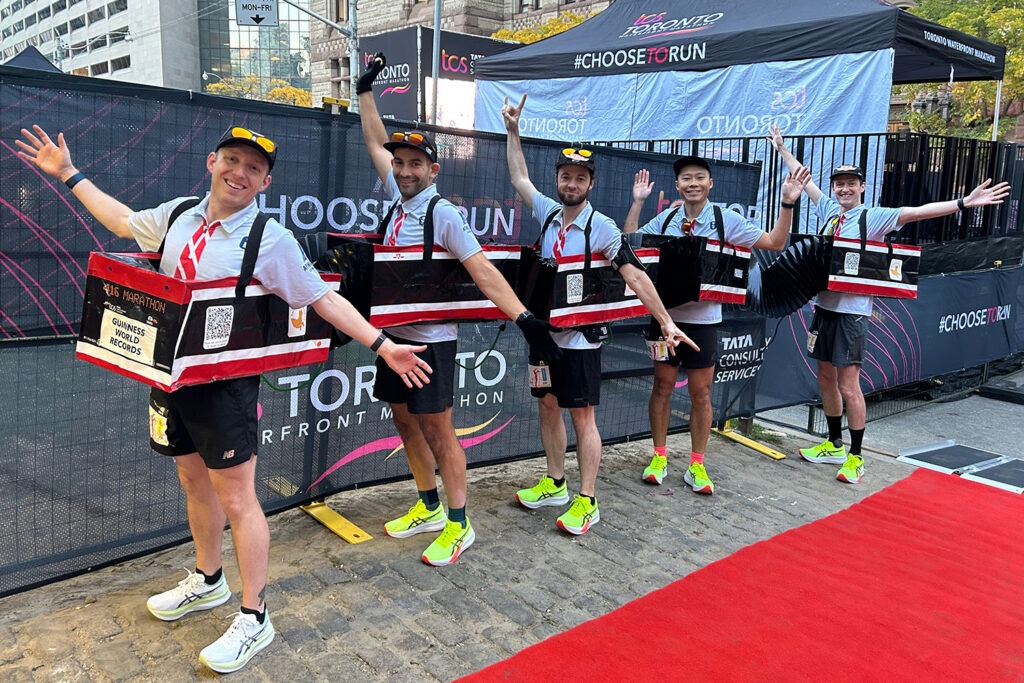
This is the second Guinness World Record broken by the group – their first was in 2023 for the Fastest Half-Marathon in a Five Person Costume. As part of their effort, the five runners raised money for Annex Cat Rescue, a charity hoping to end cat homelessness in the Greater Toronto Area.
Bonding through resilience
At Providence Healthcare, Danny and David, patients in the Orthopedic and Amputee rehabilitation program, have built their comforting friendship piece-by-piece.
The two companions meet several times each day in the A5 unit, which assists patients with lower limb amputation and musculoskeletal injuries in improving functionality, including physical, psychosocial and emotional health. Danny is attending rehab for an above the knee amputation, and David is receiving strength-training support while healing his broken tibia.
In the hallway, the two companions work on puzzles together – no matter the time of day or night – by sorting pieces by colour and shape. They listen to music, share details about their personal experiences, and invite passersby’s to join in on puzzle building.
“It is peaceful,” says Danny. “Add a coffee and music – pure delight! It creates a calming feeling and an hour can pass so quickly.”
Tracy Martin, recreation therapist in the Orthopedic and Amputee rehabilitation unit, claims that piecing together puzzles offers many benefits for patients – physically, mentally, and socially.
“Being able to manipulate the puzzle pieces works on fine motors skills and helps in reducing depression, anxiety and stress,” she says. “When patients are happy doing activities they enjoy, it creates a sense of contentment and motivation where they are better equipped to focus on their rehabilitation goals.”
The duo, who have since given themselves the nickname ‘Puzzle Posse’ are now completing puzzles of up to 1000 pieces. David claims this experience has allowed him to piece together a bigger picture of life.
“This puzzle is a metaphor of life,” David says. “You need patience and if you keep persisting putting the pieces of the puzzle together, it represents the pieces of life and how life comes together to create beauty and a sense of accomplishment.”
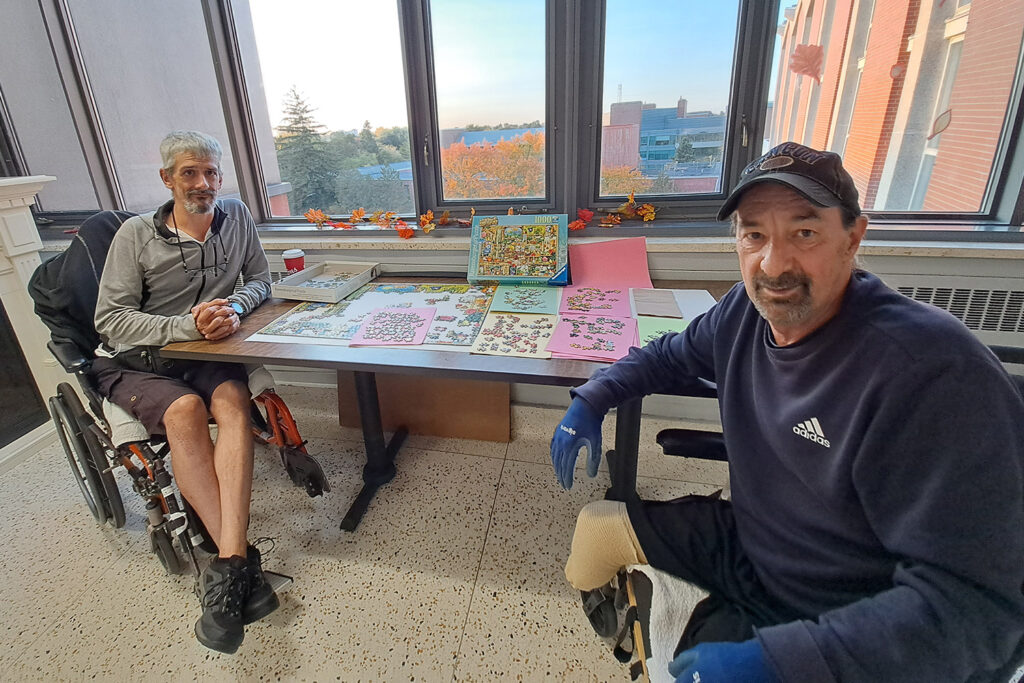
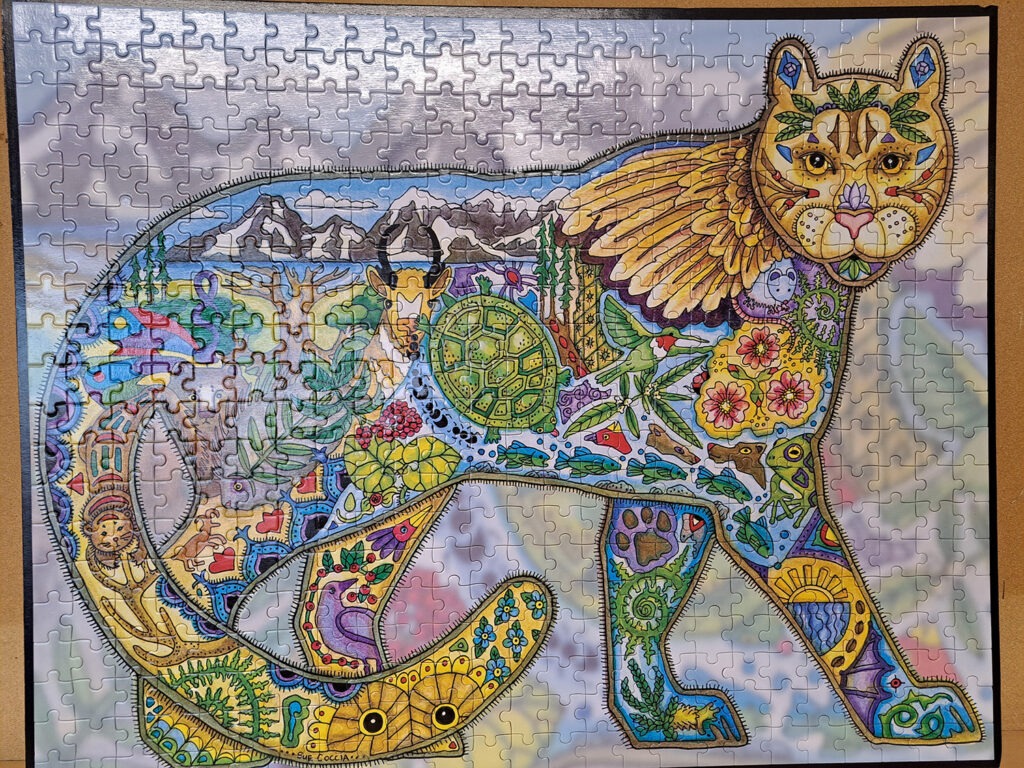
Forming unexpected connections
In 1997, Manny Atance’s new role as a Clinical Resource Coordinator at Providence Healthcare’s Adult Day Program (ADP) marked an important milestone in his career path. Unknowingly, he would also celebrate many of his future milestones at the same location.
His future filled with celebrations at Providence was cemented during his first shift, where he engaged in a short conversation with Nevenka, a housekeeper and his future mother-in-law. While he did not think much of their conversation, Nevenka informed her daughter Susie, also a housekeeper at Providence, of the new man working in ADP.
The mother-and-daughter duo would then rearrange shifts the following week to allow Susie to clean the ADP space, where the couple would first interact. Susie accepted Manny’s helping hand with cleaning, and in her personal life.
“I thought she seemed like a really nice person, and I thought she was attractive,” says Manny. “So I said, ‘You know, I can help you with your ESL if you want.’”
What began as a friendship led to a budding romance, and while Susie left her job at Providence to pursue college and a career in administration, she found herself back at the workplace four years later for Manny’s proposal. Both the ADP community and Nevenka attended.
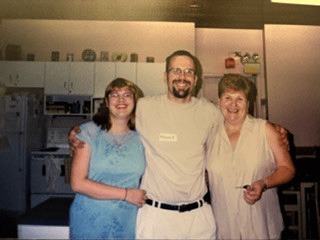
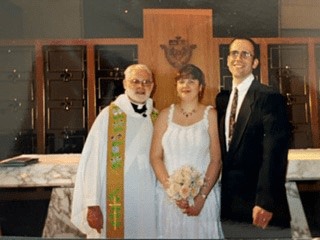
The two officially tied the knot at Susie’s family church on Jan. 26, 2002 – but also arranged a second wedding in July at Providence’s chapel. It is this same chapel where the couple would later baptize their two children, and where Manny’s mother would eventually reside.
“Providence defined me and it’s also defined our marriage in some ways,” says Manny. “We’re just grateful to Providence; this place has meant so much to us,” Manny and Susie agree.
